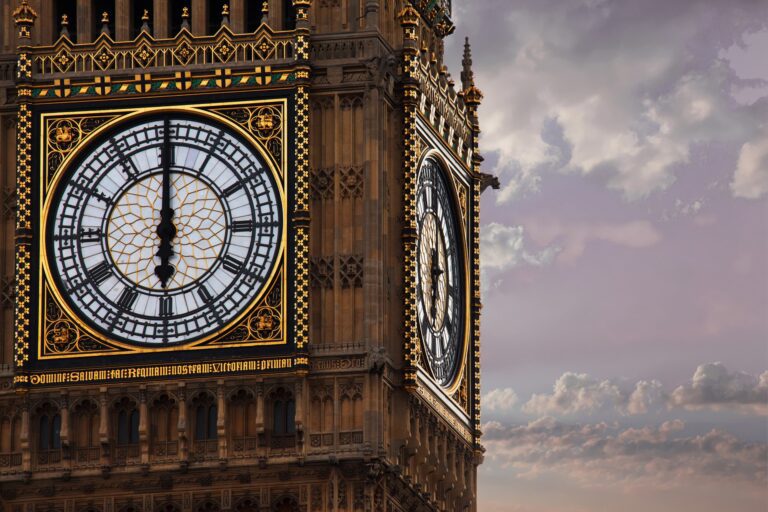Introduction
The publication of Lady Hale’s memoirs is likely to prompt an assessment of her undeniably impressive judicial career. Given its title, Spider Woman: A Life, attention may focus on what Lady Hale has to say about her role in the Supreme Court prorogation litigation in Cherry/Miller (No 2) [2019] UKSC 4. After all, it is that decision, along with the notorious arachnoid brooch, that made her famous with the general public.
Yet no assessment of her legacy would be complete without discussing the last decision that she heard as President of the Supreme Court, Whittington Hospital NHS Trust v XX [2020] UKSC 14. If nothing else, it proves that even judges do not produce their best work on their last day in the job. The reason Lady Hale’s judgment for the majority is so objectionable is that it overturns settled case law and undercuts clear statutory policy in order to facilitate commercial surrogacy arrangements that would be illegal if they took place in this country. Moreover, this radical change in the law is underpinned by some of the flimsiest reasoning one could hope to find in a Supreme Court judgment in recent years (unless one is incapable of making a distinction between a commercial and an altruistic practice). Handed down in April 2020, the case failed to knock coronavirus off the headlines and has barely attracted attention beyond a small number of tort and medical lawyers. This is unfortunate because, as judicial power grabs go, it could comfortably hold its own alongside any of the 50 problematic cases previously identified by the Judicial Power Project. It is therefore worthy of further comment.
Whittington Hospital NHS Trust v XX
The defendant hospital had negligently failed to detect the claimant’s (Mrs X) cervical cancer. She had 12 eggs frozen before undergoing treatment for the cancer, which made her infertile.
Mrs X wanted to have a family with her partner and sought to achieve this with a surrogacy arrangement. Surrogacy involves a woman (the surrogate) gestating a child for another individual or couple (the intended parent(s)) with the intention of the child being handed over after birth and parental responsibility being transferred. She wished to undergo a commercial surrogacy arrangement in California, where the practice is lawful and surrogacy contracts are binding.
By way of contrast, in the UK surrogacy itself is lawful but commercial surrogacy is prohibited. The Surrogacy Arrangement Act 1985 as amended by the Human Fertilisation and Embryology Acts of 1990 and 2008 makes it illegal to negotiate surrogacy arrangements on a commercial basis but the surrogate, the intended parent(s) and non-profit-making bodies are not caught by this prohibition. The commercial surrogacy offences can only be committed in the UK and surrogacy contracts are not enforceable.
The 2008 Act also allows the transfer of legal parenthood through a parental order. On the face of the legislation, a parental order can only be obtained if the surrogate has been paid no more than her reasonable expenses. Despite this, the courts can and will retrospectively authorise even excessive payments as doing so is normally in the child’s best interests. If a parental order cannot be made then the intended parents can often adopt the child.
Against this legal background, Mrs X brought a claim in negligence against the hospital. Liability was admitted and the key issue in the case was the correct measure of damages.
In the High Court Mrs X was awarded the costs of a non-commercial surrogacy arrangement in the UK but damages reflecting the cost of the Californian arrangement were refused. This was because as an earlier Court of Appeal decision, Briody v St Helens and Knowsley AHA [2001] EWCA Civ 1010, where Hale LJ (as she then was) delivered the leading judgment prevented them being awarded. The High Court judge also distinguished surrogacy with Mrs X’s own eggs and those of a donor – only the costs for the former could be awarded. The Court of Appeal agreed with the judge that damages for non-commercial arrangement could be awarded but departed from Briody and permitted the claimant’s appeal for the commercial arrangement. It also held that a distinction should not be made between surrogacy with one’s own eggs and those of a donor.
The Supreme Court unanimously agreed that the claimant could claim the costs of a domestic non-commercial surrogacy arrangement and that this could take place with donor eggs. A 3:2 majority (Lady Hale, Lord Kerr and Lord Wilson in the majority; Lord Carnwath and Lord Reed dissenting) also held that the claimant should be able to recover the costs of a commercial surrogacy arrangement in California. It is this latter aspect of the decision that is problematic.
A problematic case
This decision on the appropriate measure of damages in a medical negligence case appears to undercut the consistent statutory policy that commercial surrogacy should be discouraged. The general principle when compensating claimants in tort is to put them in the position they would have been in had the tort not been committed as far as money will allow. Damages will be irrecoverable if they are contrary to legal policy or unreasonable. Given the interpretive scope contained with the concepts of ‘policy’ and ‘reasonableness’, judges have a lot of discretion when deciding whether to award damages. In Whittington the majority of the Supreme Court did not use this discretion wisely. The thread running through the relevant statutes is a policy of opposition to commercial surrogacy: such contracts are unenforceable, profit-making bodies are not allowed to take part in the arrangement and anything above reasonable expenses is discouraged (albeit child welfare can trump the latter consideration). Furthermore, Briody had already determined that damages for commercial surrogacy were irrecoverable. Of course, the Supreme Court was not bound by that Court of Appeal decision but, as Lord Carnwath said in his dissenting judgment, it had not been ‘seriously questioned as a reflection of the law and policy as it stood at the time’ (at [58]). What, then, were the reasons for unsettling the law?
According to Lady Hale, Briody’s persuasiveness had been ‘affected by the developments in law and social attitudes which have taken place since then’ (at [28]). These supposedly included:
- There had been ‘quite dramatic’ developments in the law of surrogacy. For example, under the 1985 Act ‘originally all third parties were banned from taking part in surrogacy arrangements for payment, whereas under the 2008 Act amendments, non-profit-making bodies may initiate negotiations and compile information for reasonable payment’ (at [29]).
- There has been ‘[m]ore dramatic still’ developments in what constitutes a family such as permitting gay couples and single people to apply for parental orders (at [30])
- Government policy now supports surrogacy arrangements in appropriate cases (at [33]).
- There has been significant progress in the medicine and science of assisted reproduction since the Surrogacy Arrangement Act 1985 was passed and increasing public acceptance of such methods of founding a family (at [35]).
- A recent Law Commission consultation paper, Building families through surrogacy: a new law, shows that public attitudes are supportive towards surrogacy. Their paper shows that ‘concerns about exploitation and commodification’ could be ‘alleviated by more effective regulation’ (at [37]-[38]).
- There is a ‘spectrum’ of surrogacy arrangements with ‘desperately poor women’ being ‘grossly exploited by agents and middlemen’ at one end and altruistic arrangements at the other. It is ‘no longer thought that women should not have the right to choose to use their bodies in this way. But it is thought that both they and the commissioning parents should be protected from exploitation and abuse’ (at [39]).
While these changes might provide reasons for allowing damages for non-commercial arrangements, none show that Briody is outdated in relation to commercial surrogacy. One can support gay marriage, single parenthood, the use of IVF and other reproductive technologies and surrogacy generally without approving of it being run along commercial lines. Citation of the Law Commission’s proposals is also a puzzling choice. Although they propose liberalising the law, their consultation paper opposes a commercial model (at [9.81]). Lady Hale’s conclusion that there had been a shift in the public’s attitudes towards commercial surrogacy since Briody are therefore without foundation.
What, then, about commercial surrogacy? Comparing the costs of the proposed commercial arrangement with a non-commercial domestic one, Lady Hale minimises the differences between the two regimes. Acknowledging that the payments to the surrogate in California would be greater than under a non-commercial model she states ‘But, as we have seen, it is not unlawful for commissioning parents to make such payments here. And whether made here or abroad they are likely to be retrospectively authorised by the court’ (at [50]).
The reason courts retrospectively authorise such payments because they are, as Lady Hale herself hints at earlier in her judgment, presented with a fait accompli (at [16]). There is a difference between retrospectively approving of an arrangement when faced with an existing child whose welfare needs to be promoted and going against the policy of the statute to encourage the creation a child. A policy against commercial surrogacy might be outweighed by one in favour of promoting child welfare or one against criminalising the parents of new-born children but it still exists.
Once this path-clearing has been completed, we are left with ‘the fees paid to the US lawyers and surrogacy agency, which would be unlawful here but are not in the US’. Lady Hale asks, ‘To what extent should that taint all of the items in the bill?’ (at [50]). This rhetorical question is answered by reiterating the ways society has moved on since Briody(at [52]). Those still seeking the link between changing societal attitudes towards surrogacy generallyand approval for a commercial model are left to wait in vain. Instead we are presented with the conclusion that ‘it is no longer contrary to public policy to award damages for the costs of a foreign commercial surrogacy’ (at [53]).
Judicial power in private law cases
Lord Reed, Lady Hale’s successor as President of the Supreme Court, once said in an interview:
I’m much more inclined to develop the law in that sort of technical area where there’s going to be no controversy – beyond perhaps the legal profession – about how we develop the law of contract or unjust enrichment or tort…But if we’re dealing with areas of controversy in society, I’m much more inclined – and I think more inclined than some of my colleagues – to stand back and leave it to the political branches of government to decide on the appropriate policy.
An admirable sentiment, were it not for the fact that contract, tort and unjust enrichment affect our everyday lives and often involve contentious questions of social policy. Although they capture the popular imagination less readily than exciting constitutional and human rights questions, they should not only be of interest to the legal profession. For, as Whittington illustrates, it is in this arena that egregious exercises of judicial power not only take place but where they also escape wider notice.
The majority of the Supreme Court in Whittington acted contrary to statutory policy and settled case law in order to promote foreign commercial surrogacy arrangements. Confirming that damages can be awarded only for non-commercial surrogacy arrangement would have been an incremental development in the law that reflected changing societal attitudes. Permitting compensation for commercial surrogacy, a practice that remains controversial is – and, given the non-sequiturs littering the majority judgment in Whittington, was – much harder to justify. One might approve of commercial surrogacy. One might even want scarce NHS resources redirected towards Californian surrogacy agencies. But it is not clear why, in the face of legislation discouraging this practice, unelected judges should be the people to make such decisions. As was noted in the sensible dissenting judgment of Lord Carnwath, who emphasised the importance of maintaining consistency in the law (at [63]), whether commercial surrogacy should be encouraged is an issue best left for parliament rather the judiciary. Unless or until commercial surrogacy is permitted in this country, Whittington should be overturned.
Craig Purshouse, Senior Lecturer in Law, University of Liverpool.
Some of the discussion in this post draws upon research from a case commentary on the Court of Appeal decision in XX v Whittington Hospital NHS Trust [2018] EWCA Civ 2832 that I co-authored with Amel Alghrani (see Amel Alghrani and Craig Purshouse, ‘Damages for Reproductive Negligence: Commercial Surrogacy on the NHS?’ (2019) 135 LQR 405) but responsibility for the views expressed here are mine alone.



